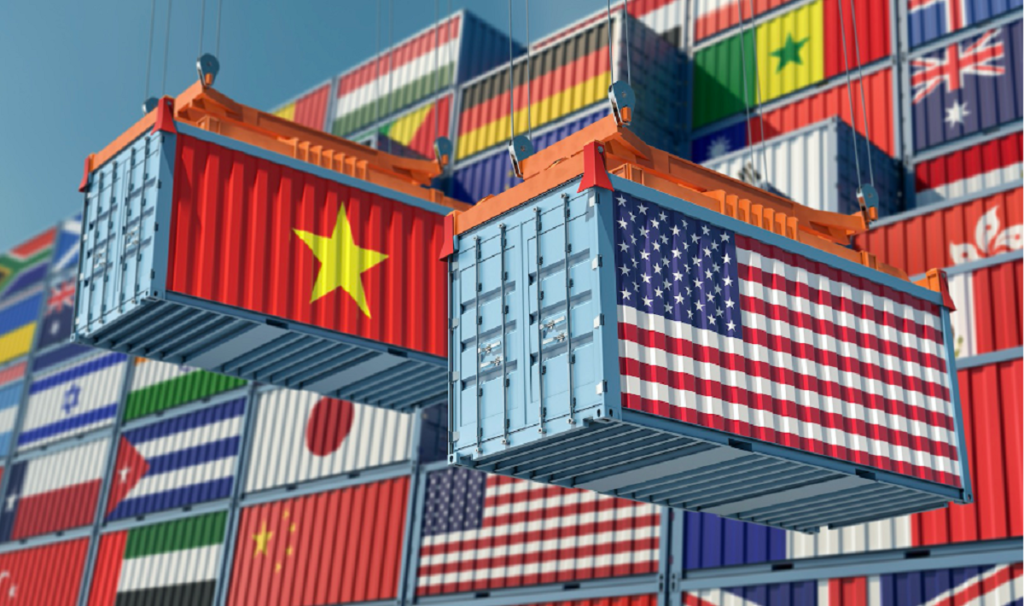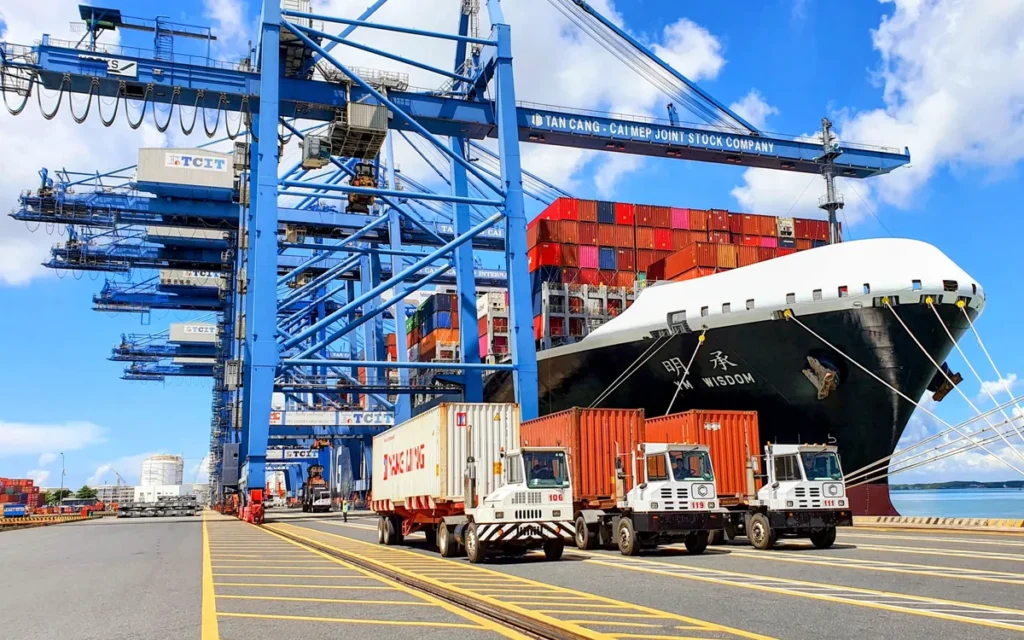The US-China trade tension is creating major changes in production and export activities globally, especially for a highly open economy like Vietnam.
According to economic experts, Vietnamese enterprises are facing many opportunities, but also many challenges and negative impacts. They need to respond flexibly and improve their internal strength to withstand and stand firm against the storms and events ahead.
Opportunity to increase position and export turnover
Talking to VTV Times reporters about the trade tensions between the US and China and some other partners, economic expert Nguyen Tri Hieu said that this situation will have a significant impact on the Vietnamese economy as well as the business community. In particular, Mr. Hieu emphasized the investment shift of “big guys” from the US as well as some other powers to Vietnam.
Vietnam has gained valuable experience from President Trump’s first term and has every opportunity to increase its attractiveness and attract more attention from foreign companies. Economists predict that this trade reallocation could boost Vietnam’s GDP by about 0.5%.
From the perspective of the management agency, Deputy Director of the Import-Export Department (Ministry of Industry and Trade) Tran Tranh Hai said: “The tax policies of the Donald Trump administration on imported goods from China have been causing a trade war. Most recently, on February 10, China officially imposed an additional tax of up to 15% on some imported goods from the US, in response to the US President imposing an additional tax of 10% on Chinese goods on February 4. At the same time, China also tends to limit exports to the US. This is a great opportunity for Vietnam to rise to become one of the leading important trade partners of the US.

As a business that has been exporting to the US and EU markets for more than 10 years, Ms. Nguyen Thu Huong – Director of Thanh Huong Textile Import-Export Company shared that our country’s textile and garment industry is changing strongly to change in “quality”. We really need investment and transfer of advanced and sustainable technology from FDI enterprises. Trade tensions will cause many multinational companies to consider shifting production from China to other countries, including Vietnam. With low labor costs and good infrastructure, Vietnam is and will become an attractive destination for foreign investors and manufacturers, thereby receiving large capital injections and modern technology transfer.
Challenges from US protectionist and tariff policies
In addition to opportunities, according to the Deputy Director of the Import-Export Department, the US-China trade war has caused Vietnam to face many negative impacts. One of the major concerns is the increase in import taxes on goods imported into the US. The emergence of unilateralism will erect more barriers and impose high taxes on imported goods, which could reduce consumer demand in this country, affecting the output and value of Vietnam’s exports to the US. For example, President Donald Trump has just officially signed an executive order imposing a 25% tax on steel and aluminum imported into the US from March 4. Accordingly, countries that are currently exempted from aluminum and steel taxes will no longer enjoy this benefit. This is an opportunity for the Vietnamese aluminum and steel industry, but the profit margin of businesses will certainly decrease.
Furthermore, the US will also investigate the origin of goods more strictly to ensure that no imported goods from other countries are missed. This could lead to the imposition of import taxes and anti-dumping taxes on Vietnamese exporting enterprises. Therefore, enterprises need to closely monitor information from the US market to have appropriate business and export plans. Currently, the Ministry of Industry and Trade has increased support for enterprises in terms of information, export markets and prepared scenarios and plans to respond to the impact of President Donald Trump’s new tax policy.
One risk that cannot be ignored for Vietnam is that it will become a manufacturing factory to replace China: mainly assembling, labeling and exporting without holding core technology. At that time, our country will continue to depend on raw materials and components from abroad, unable to rise up the global value chain.
Faced with such potential risks, expert Nguyen Tri Hieu said that Vietnam has had effective response solutions, turning “danger” into “opportunity”. One of the most important experiences is strengthening cooperation with the US in the field of trade. Vietnam has signed many trade agreements with this superpower, including agreements on the export of goods and services. In addition, Vietnam has also increased investment in the manufacturing and export sectors. This has helped Vietnam increase its production capacity and improve the quality of export products.
According to Mr. Truong Van Cam, to seize the opportunities from the trade war, the Vietnamese business community in general and textile and garment enterprises in particular need deeper and closer cooperation between enterprises in the same industry to share resources, technology and experience. In particular, enterprises need to invest in research to create higher quality products, better meet market demand and strengthen supply chain management to ensure stable input materials, minimize risks, and proactively deal with challenges and opportunities from the trade war: “Certainly, by effectively implementing these measures, Vietnamese textile and garment enterprises can seize the opportunities from the trade war and enhance their competitiveness in the international market,” Mr. Cam emphasized.
Minister of Industry and Trade Nguyen Hong Dien said that President Donald Trump’s plan to increase tariffs on goods from a number of countries could provide an opportunity for Vietnam to anticipate supply chain shifts to attract higher quality investment flows into higher value-added segments in industries. However, Vietnam also faces challenges in price competitiveness due to increased logistics costs and meeting the increasingly high demands of export markets./.
















